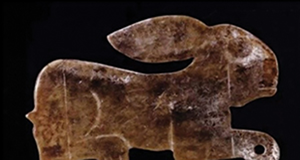Crossref Citations
This article has been cited by the following publications. This list is generated based on data provided by
Crossref.
Sheng, Pengfei
Hu, Yaowu
Sun, Zhouyong
Yang, Liping
Hu, Songmei
Fuller, Benjamin T.
and
Shang, Xue
2020.
Early commensal interaction between humans and hares in Neolithic northern China—CORRIGENDUM.
Antiquity,
Vol. 94,
Issue. 377,
p.
1395.
Sheng, Pengfei
Shang, Xue
Zhou, Xinying
Storozum, Michael
Yang, Liping
Guo, Xiaoning
Zhang, Pengcheng
Sun, Zhanwei
Hu, Songmei
Sun, Zhouyong
and
Hu, Yaowu
2021.
Feeding Shimao: Archaeobotanical and Isotopic Investigation into Early Urbanism (4200-3000 BP) on the Northern Loess Plateau, China.
Environmental Archaeology,
p.
1.
Ma, Ying
Bockmann, Ralf
Stevens, Susan T.
Roudesli‐Chebbi, Sihem
Amaro, Alessio
Brozou, Anastasia
Fuller, Benjamin T.
and
Mannino, Marcello A.
2021.
Isotopic reconstruction of diet at the Vandalic period (ca. 5th–6th centuries AD) Theodosian Wall cemetery at Carthage, Tunisia.
International Journal of Osteoarchaeology,
Vol. 31,
Issue. 3,
p.
393.
Festa, Marcella
and
Monteith, Francesca
2022.
Between Plain and Plateau: Micro-Transitions in Zooarchaeological Landscapes in the Guanzhong Region of Northwest China.
Land,
Vol. 11,
Issue. 8,
p.
1269.
Liu, Xi
Zhang, Shangzhe
Cai, Zhenyuan
Kuang, Zhuoran
Wan, Na
Wang, Yinjia
Mao, Leyan
An, Xuan
Li, Fang
Feng, Tuo
Liang, Xiaolong
Qiao, Zhenglei
Nevo, Eviatar
and
Li, Kexin
2022.
Genomic insights into zokors’ phylogeny and speciation in China.
Proceedings of the National Academy of Sciences,
Vol. 119,
Issue. 19,
Sheng, Pengfei
Liao, Jingwen
Allen, Edward
Sun, Zhouyong
Hu, Songmei
Guan, Ying
and
Shang, Xue
2023.
New archaeobotanical evidence for Tolai hare (Lepus tolai) millets-consumption on the Loess Plateau of China.
Journal of Archaeological Science: Reports,
Vol. 48,
Issue. ,
p.
103899.
Sun, Nuoyang
Ma, Qiang
Han, Bin
and
Yang, Yimin
2023.
New insights into the subsistence strategies of the northwest frontier of the Western Zhou Dynasty (1046–771 BCE) through pottery lipid analysis.
Archaeological and Anthropological Sciences,
Vol. 15,
Issue. 6,
Guo, Yi
Guo, Guicheng
Xia, Juebao
Liu, Huashi
Zhang, Yan
Wu, Rubi
Sun, Yongge
and
He, Yuxin
2024.
Isotopic evidence of millet consumption in the Liangshan region of southwestern China during the Neolithic.
Archaeological Research in Asia,
Vol. 39,
Issue. ,
p.
100535.
Hussain, Shumon T.
2024.
Feral ecologies of the human deep past: multispecies archaeology and palaeo‐synanthropy.
Journal of the Royal Anthropological Institute,





